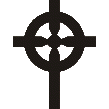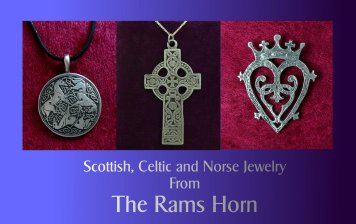Saint Clement's Church
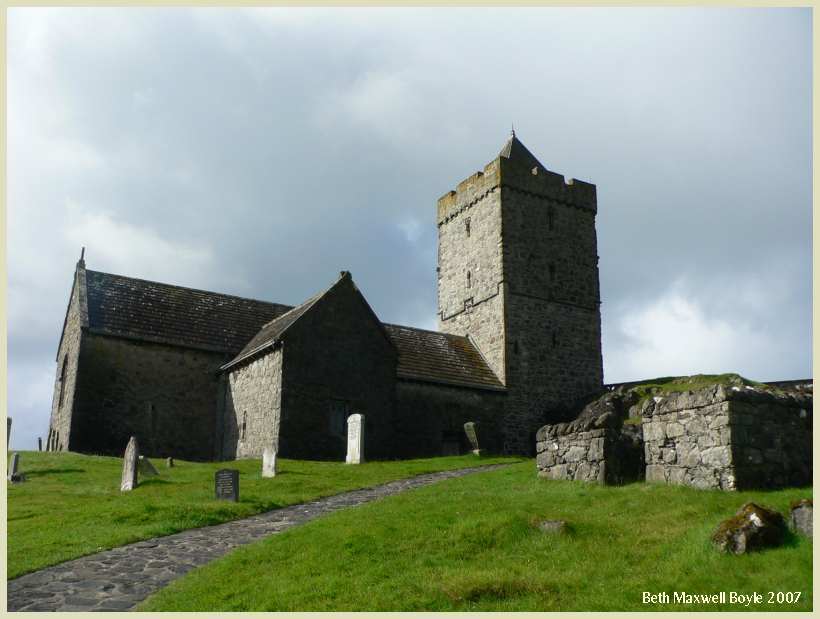
St Clement's Church at Rodel, on the Isle of Harris, Scotland
Situated in the village of Rodel, three miles south of Leverburgh.
Tur Chliamainn, Rodel

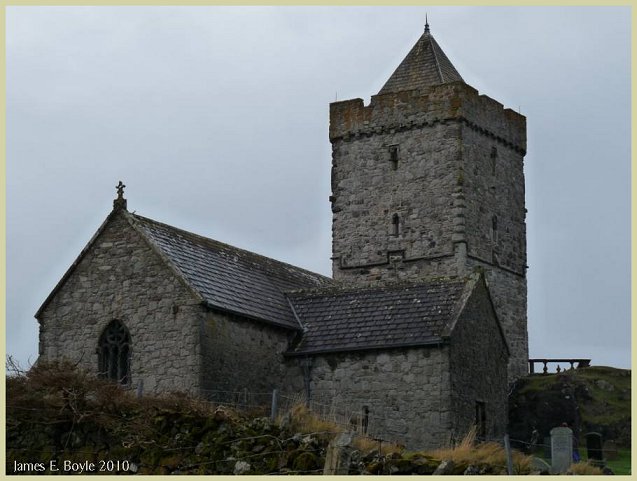
St. Clement's Church, Rodel is closely related to the Augustinian nunnery on Iona, a female effigy (known as sheela na gigs) can be found on the South of the Church with a "sister" found in the outer wall on Iona. St. Clement's is a treasure trove of late medieval masonry with several fine examples to be found on it's exterior walls. The Church is dedicated to St. Clement, the 3rd bishop of Rome (after St. Peter) who was martyred in AD 90. It is suspected that the church was commissioned by Alexander MacLeod of Dunvegan. St Clement's Church at Rodel, on the Isle of Harris, was built in the late 15th century for the Chiefs of the MacLeods of Harris, who lived across the Minch at Dunvegan Castle. In 1528 Alasdair Crotach Macleod, 8th Chief, prepared for himself a magnificent wall tomb. Above a carved effigy of the chief, four angels circle above the Virgin Mary and two bishops; the chief's castle at Dunvegan and his galley; below is the scene of the Chief hunting stags; the weighing of his soul and an inscriptions. The arch of the tomb carries carvings of the twelve apostles; two angels and God the father holding the cross and surrounded by the beasts of the four evangelists. This is the finest late mediaeval wall tomb in Scotland
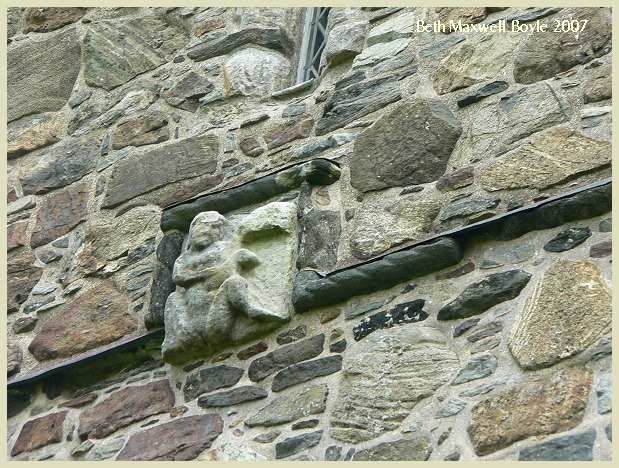
St. Clement's Prayer
You, Lord, through your works have revealed the everlasting structure of the world.
You, Lord, created the earth. You are faithful throughout all generations,
righteous in your judgments, marvelous in strength and majesty, wise in creating and prudent in establishing what exists,
good in all that is observed and faithful to those who trust in you, merciful and compassionate;
forgive us our sins and our injustices, our transgressions and our shortcomings.
Do not take into account every sin of your servants, but cleanse us with the cleansing of your truth,
and "direct our steps to walk in holiness and righteousness and purity of heart," and "to do what is good and pleasing in your sight"
and in the sight of our rulers. Yes, Lord, "let your face shine upon us" in peace "for our good,
" that we may be sheltered "by your mighty hand" and delivered from every sin "by your uplifted arm";
deliver us as well from those who hate us unjustly.
Give harmony and peace to us and to all who dwell on the earth, just as you did to our fathers when they reverently
"called upon you in faith and trust," that we may be saved, while we render obedience to your almighty and most excellent name,
and give harmony and peace to our rulers and governors on earth.
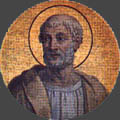
You, Master, have given them the power of sovereignty through your majestic and inexpressible might,
so that we, acknowledging the glory and honor which you have given them, may be subject to them, resisting your will in nothing.
Grant to them, Lord, health, peace, harmony, and stability,
that they may blamelessly administer the government which you have given them.
For you, heavenly Master, King of the ages, give to the sons of men glory and honor and authority over those upon the earth. Lord,
direct their plans according to what is good and pleasing in your sight, so that by devoutly administering in peace
and gentleness the authority which you have given them they may experience your mercy.
You, who alone are able to do these and even greater good things for us,
we praise through the high priest and guardian of our souls, Jesus Christ,
through whom be the glory and the majesty to you both now and for all generations and for ever and ever. Amen
(1 Clement 61.1-3)
This is an example of an early Christian prayer is a portion of a prayer written by Clement of Rome in a letter to the church in Corinth around 96 A.D.
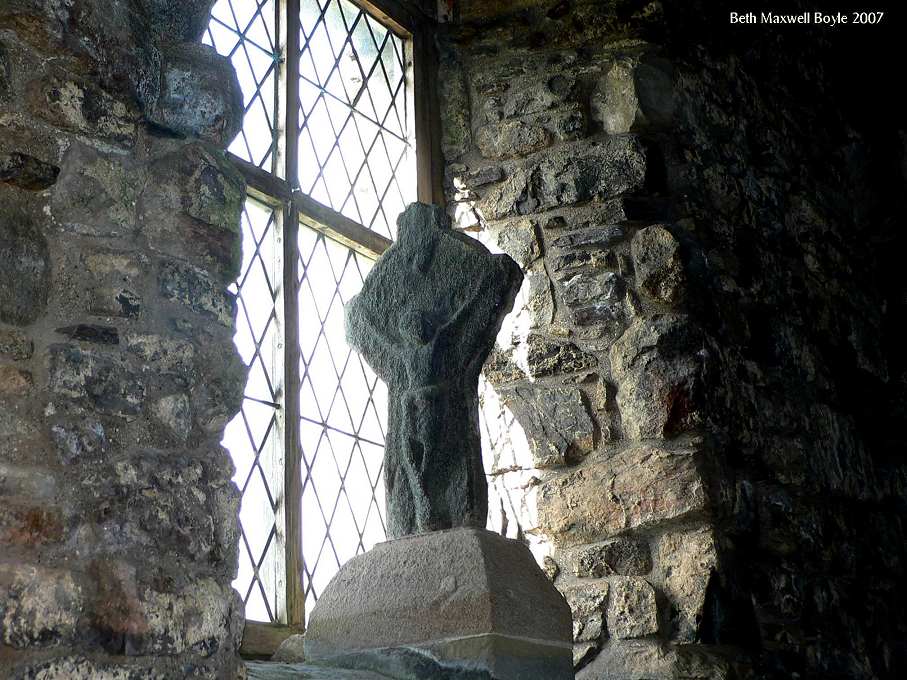
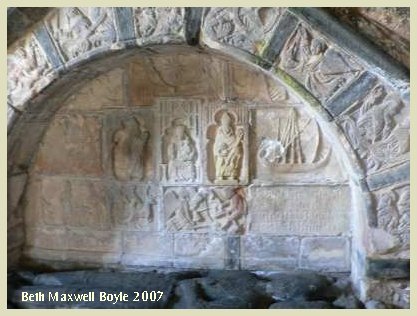

Alexander MacLeod of Dunvegan and Harris was also known as Alasdair Crotach or Humpback. His tomb is situated on the south side of the choir (eastern part of church) and is dated 1528. We can safely assume from this that at least that part of the church had been completed at that time. The tomb of Alasdair Crotach is finely adorned with excellent examples of masonry including an effigy of himself dressed in full armour, guarded by 2 crouching lions.
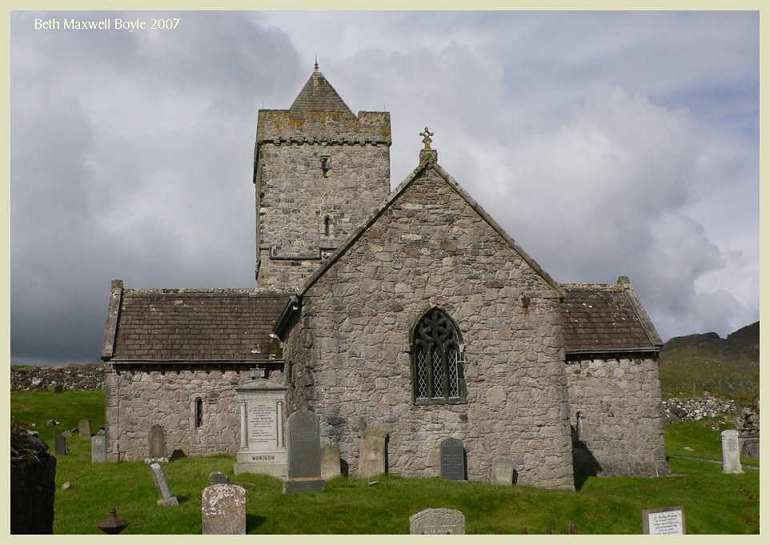
The church was built using local Lewisian gneiss rock. Its ground plan is cruciform and there is a tower at the west end, accessible through a door at the west end of the nave and a set of stone staircases and wooden ladders. The choir and the sanctuary with the high alter, which used to be separated by the nave by a wooden screen, are located at the opposite east end of the church. In the transepts leading off from the nave on both sides, there are additional chapels, the entrance door points nord and leads to nave. The architectural style is essentially that of 1520 to 1550.
In 1528, Alasdair Crotach Macleod, 8th Chief, prepared for himself a magnificent wall tomb on the south side of the choir - possibly the finest medieval wall tomb in Scotland, being crowned by an arch and ornated by carvings of biblical design. The 9th Chief, Alasadair or Alexander's son William, had his grave prepared in the south wall of the nave in 1539. In the south transept, there is a third grave probably belonging to John MacLeod of Minginish, the 10th Chief. There are five more grave slabs leaning against the wall of the north transept. The graveyard surrounding the church contains a number of MacLeod tombs.

According to Dean Donald Munro in his 1549 work about the Wester Isles , the church was built for the Chiefs of the MacLeods of Harris, who lived in Dunvegan Castle in Skye, probably from about 1520, and is not considered the first church on the site although there is no clear evidence of an older celtic church. Munro described the church as a monastery, but as there is no evidence hinting to a monastic community, this expression is believed to refer to a minister, and with it to an important parish church. It was a Catholic church before falling into disuse shortly after its completion around 1560 as a consequence of the reformation, but the churchyard continued to be used as a MacLeod burial site. The church's decayed roof was renewed in 1784 by Captain Alexander MacLeod of Berneray, but burned down shortly after and had to be rebuilt once again in 1787. In the 19th century it was used as a cow byre before being restored by Catherine Herbert Countess of Dunmore in 1873, and in 1913, the tower was rebuilt after being damaged by a lightning stroke six years earlier. Today, the church is under the care of Historic Scotland.
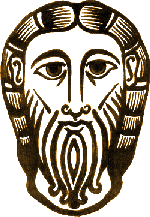
'Feuch air fear coimhead Israil
Cadal chan aom no suain.'
(The Shepherd that keeps Israel
He slumbers not nor sleeps.)
